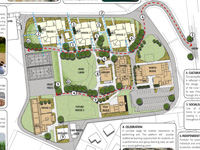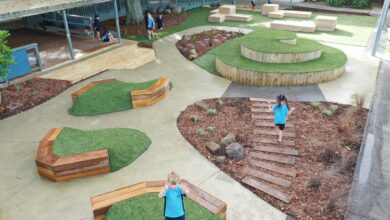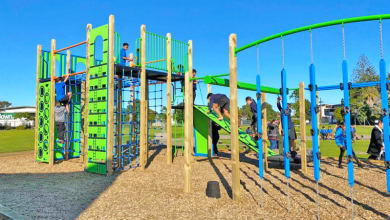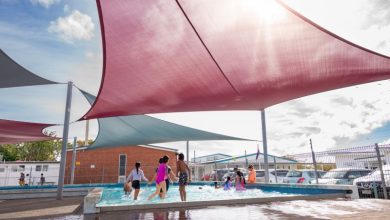How to get the most out of your surroundings

 School landscapes play a crucial part in children’s learning and development, and often are an essential and central element in the community.
School landscapes play a crucial part in children’s learning and development, and often are an essential and central element in the community.
Well designed and managed grounds provide opportunities for healthy exercise, creative play, social interaction, learning through doing and getting in touch with the natural world. The potential is huge, but it is a complex task because of the multiple functions which school grounds can fulfil.
As Bruce Curtain said in his article on Modern Learning Environments, in a previous issue:
“Often the external spaces for the school are an afterthought and yet they represent a fantastic opportunity to create great learning spaces. The key is visibility. The power of passive surveillance through being able to remotely supervise a space through good visibility can transform behaviours and learning outcomes. Careful thought by designers can unlock the potential of the neglected areas in your school grounds, bringing them back into the overall learning environment.” (p. 20, School News, issue 18, 2012)
The questions
I suppose the first question is – what do you think a school landscape is? And then what do you think a school landscape should be? Are we talking the physical school site not covered by buildings or are we talking the total space, the context of the school and its neighbourhood too.
And the next should be – why is this important?
There is now an enormous amount of educational and behavioural research which demonstrates the influence our surroundings have on our ability to develop, physically, socially and mentally. Our moods, behaviours and ability to learn can be influenced by our environment and values learned at an early age resonate through life.
They form many of our preferences and responses to the outside world. Early memories are key in how we meet the world later. Good habits and experiences last, are reflected in our actions and are passed on to others over time.
The school landscape is really a series of outdoor rooms and needs to be thought through and laid out as carefully as the buildings themselves. Sun, shade, safety, stimulus and social interaction are all key elements of a school landscape and environment.
What is the current situation with your school landscape?
The conditions are pretty universal for education sites. Everyone wants the best for their schools. Generally money for ‘landscape’ is short or non-existent. Maintenance, or lack of it, is often an issue and action is generally reactive, sporadic and a “one off”.
What do school landscapes need to do?
The functions which the school grounds and setting can provide include
• Looking good – attracting parents
• Feeling good – the pupils being comfortable in the school
• Providing teaching resources – built and natural materials and patterns
• Providing external classroom space – both for structured and casual use
• Providing stimulus outside the curriculum
• Encouraging social interaction
• Encouraging physical activity and recreation.
Each school will have its own specific opportunities and needs. Funding generally gets allocated to buildings and classrooms, or formal recreation facilities, but often not on the spaces in between. And it is these which hold the rest together and provide the character and living environment of our schools, the places students spend time and socialise, places they can experience and explore for themselves in a non-structured manner, and which also support the wider teaching and learning objectives.
So how do you get there?
• A vision – what is the character of your school, what do you want people to think of when they visit and how do you want your pupils to remember their time here?
• An inventory of your resources
• A master plan or concept to guide you
• Involvement of the students in generating the plan
• A commitment to sustainability and the future
• A way to mobilise action to achieve your plan
• And people with the passion to make it happen.
A master plan can bring all this together. I would always recommend a professional landscape architect to help you develop your plan. They can see the big picture, ask the hard questions and balance competing demands in a creative manner, providing you with a way to bring your vision into being. They can work with you to establish a brief for what you want the plan to deliver. They can take all the knowledge you have of your school, your needs and the aspirations you have and pull them together into a whole.
Developing a master plan will act as a catalyst to really know your site and community – finding out how your students use the grounds at the moment and what spaces and weather conditions are there. Getting your students engaged in the process gives it a greater chance of success. This can be done as part of the curriculum, with your landscape architect supporting the teaching and learning process.
The plan will give you a picture of your vision, whose implementation can be phased as resources allow over time and will mean that things are put in the right place, first time, and can be used to show how new ideas can be integrated to support the big picture. A list of actions can be made and prioritised. Some of these may be able to be carried out as part of maintenance, such as relocation of fencing or footpaths with paving patterns for use in maths curriculum. Others may need fundraising or sponsoring; others can be carried out as built development takes place, i.e. niche courtyard and shade sails with room for art works.
Things to think about
Planting, playgrounds and sports facilities, fencing, security, lighting and shade are easily recognised as components of the school landscape. There are many other benefits which an integrated school landscape can provide, than the obvious one of physical recreation, visual appeal and community pride. Some other aspects which it is worth considering are:
Sustainability – Environmental innovations and well-designed school grounds can benefit students and staff by being integrated into teaching and learning programmes for science and other subjects. School plantings can provide niche seating areas for plays and storytelling, raw material for arts and science projects.
There are shading and cooling impacts of vegetation which strategic landscaping can achieve, improving buildings performance and reducing heat stress. This can contribute to more comfortable conditions in which children’s behaviour, alertness and concentration improves.
There are a number of programmes and resources which schools can access such as the Enviroschools Programme www.enviroschools.org.nz; Garden to Table Trust www.gardentotable.org.nz; Cancer Society Sunsmart Assessments of Schools, www.sunsmartschools.co.nz; Green Buildings Council Green Star uildings,www.nzgbc.org.nz. As a starter, look to see whether you can put roof water tanks, to be used for irrigation; rain gardens for water quality or to absorb water into the ground; what plants grow best in the conditions; how you can provide shade where people congregate outside – can trees do this or do you need structures?
To summarise
With pressure on space and resources, and with more computer time and less physical recreation in the curriculum, school grounds need to be multifunctional and robust, a learning resource and a community focus. By identifying your needs and resources, and by getting a skilled practitioner to work creatively with your school community, you can establish a direction which will invigorate your school grounds and achieve a vibrant learning environment.
By Helen Preston Jones , Principal Landscape Architect/Planner with Opus International Consultants.









